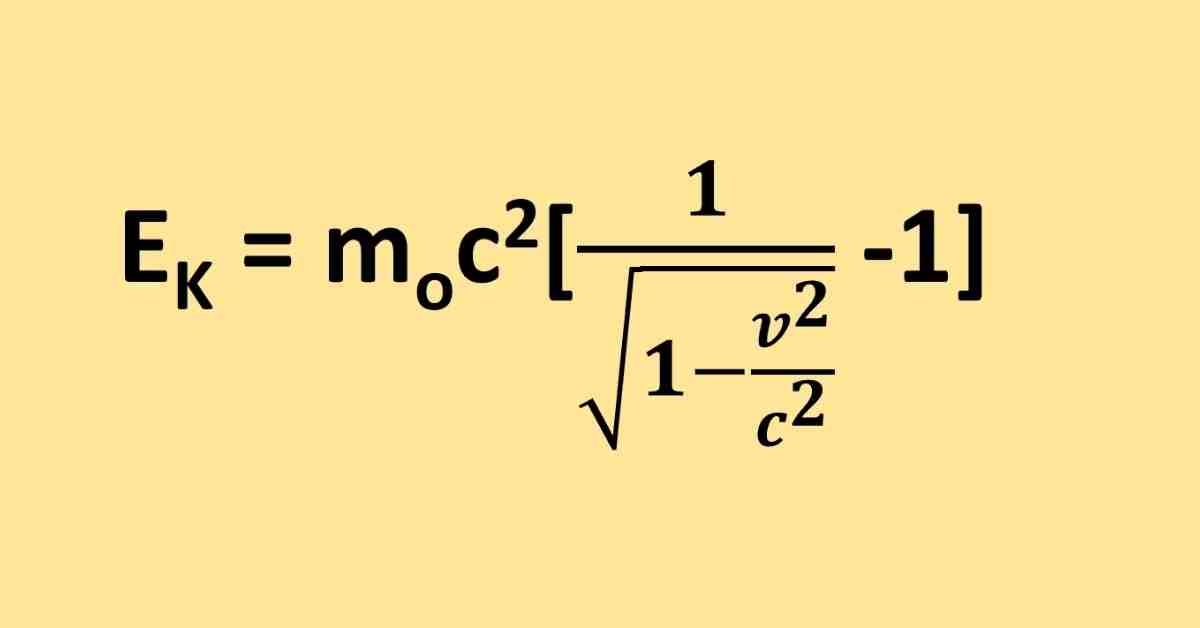Newton’s First Law of Motion, also known as the Law of Inertia, states that an object at rest will remain at rest and an object in motion will continue to move in a straight line at a constant speed unless acted upon by an unbalanced force. This means that an object will not change its state of motion unless there is an external force acting upon it. In simpler words, an object tends to maintain its current state of motion, either at rest or moving in a straight line, unless something else changes it.
The main equation of Newton’s First Law of Motion is:
F = ma
where:
- F represents the net force acting on an object;
- m represents the object’s mass;
- a represents the object’s acceleration.
- According to Newton’s First Law, if the net force acting on an object is zero (i.e., F = 0), the object will remain at rest or continue to move with a constant velocity (i.e., zero acceleration).
Examples of Newton’s First Law in Everyday Life
- The book on the table will stay still unless someone moves it.
- Ball rolls until it stops or hits an obstacle.
- The person in the car moves forward until the car stops.
- The flicked coin falls into a glass due to inertia.
- The bottle on the dashboard moves forward during sudden braking.
- Skater keeps moving forward until stopped.
- The swimmer moves in a straight line until stopped by water resistance or other force.
- Satellite orbits Earth at a constant speed unless acted upon by gravity from another object.
- The spinning top keeps spinning until it stops due to friction or an external force.
- Kite keeps moving until it hits something.
Formulas Relate to Newton’s First Law of Motion
| Equation | Description | Explanation | Example |
| v = 0 | Object at rest. | Stays at rest unless external force. | Ball on a flat surface. |
| v = constant | Object in uniform motion. | Continues unless external force. | Ball on flat surface. |
| v = u + at | Object with constant acceleration. | Continues unless external force. | Car accelerating. |
| F = 0 | No external force. | Continues at constant velocity or remains at rest. | Spaceship in space. |
| F = ma = 0 | Principle of inertia. | Stays at rest or in motion unless external, unbalanced force. | Soccer ball at rest. |
How Does Inertia Relate to Newton’s First Law?
Inertia and Newton’s First Law are closely related concepts. Inertia refers to an object’s resistance to changes in its state of motion due to its mass. Newton’s First Law states that an object at rest or in motion will remain in that state unless acted upon by an external, unbalanced force. In other words, an object’s inertia makes it tend to maintain its current state of motion, and any change in that state requires an external force to overcome the inertia. Therefore, inertia is a fundamental aspect of Newton’s First Law, as it explains why objects resist changes in their motion and why a force is necessary to alter that motion.
- When a person in a moving car suddenly stops, their body continues to move forward due to inertia until the seatbelt or another object stops them.
- In an amusement park ride, when the ride suddenly stops, the riders’ bodies tend to continue moving in a straight line due to inertia until the ride or another object stops them.
- When a soccer ball is kicked, it will keep moving until it encounters resistance from the air or the ground.
- When a stack of books is pushed off a table, each book will tend to stay at rest due to inertia until it hits the ground or another object.
- When a person jumps off a diving board, their body tends to move in a straight line due to inertia until the water resistance and gravity slow them down and bring them to a stop.
Relationship Between Force and Motion in Newton’s First Law
| Newton’s First Law | An object at rest will remain at rest (v = 0) and an object in motion will remain in motion with a constant velocity (v = constant) in a straight line, unless acted upon by an external, unbalanced force. |
| An object at rest will remain at rest (v = 0) and an object in motion will remain in motion with a constant velocity (v = constant) in a straight line unless acted upon by an external, unbalanced force. | |
| Relationship between force and motion | The presence of a force acting on an object can change its motion. When a force is applied to an object, it can cause the object to start moving from rest (v = u + at), change its direction of motion, or change its speed. |
| According to Newton’s First Law, the motion of an object is related to the forces acting on it. If no net force (F = 0) is acting on the object, its motion will not change. If there is a net force (F ≠ 0) acting on the object, it will accelerate (a) in the direction of the force. | |
| Newton’s Second Law | The relationship between force and motion is given by Newton’s Second Law, which states that the acceleration of an object (a) is directly proportional to the net force (F) acting on it and inversely proportional to its mass (m): F = ma. |
How Newton’s First Law Affects Sports and Physical Activities
Newton’s First Law affects sports and physical activities in several ways:
- Inertia affects the motion of a ball.
- The law explains why a skater on ice will continue moving forward in a straight line.
- Balance and stability are crucial in many sports.
- Starting and stopping require applying force.
- The projectile motion follows the first law.
- Equipment used in sports follows the first law.
- Athletes can use the first law to improve their training and conditioning.
Summary
- An object at rest will remain at rest, and an object in motion will continue to move at a constant velocity unless acted upon by an external force.
- This means that an object tends to maintain its current state of motion.
- The amount of matter in an object, or its mass, determines how much force is needed to change its state of motion.
- The tendency of an object to resist changes in its state of motion is called inertia.
- The First Law of Motion is also known as the Law of Inertia.
Solved Numerical Problems
1. A 10 kg box is at rest on a flat surface. What force is required to set it in motion?
Solution: Since the box is at rest, the net force acting on it is zero. To set it in motion, a force greater than zero is required. Using the formula F = ma, where m = 10 kg and a = 1 m/s^2 (assuming a constant acceleration), the force required is F = ma = 10 kg x 1 m/s^2 = 10 N.
2. A 5 kg block is sliding on a frictionless surface at a constant velocity of 2 m/s. What is the net force acting on the block?
Solution: Since the block is moving at a constant velocity, the net force acting on it is zero. This is because, according to Newton’s First Law, an object in motion will remain in motion with a constant velocity unless acted upon by an external force.
3. A car travelling at a constant speed of 20 m/s comes to a stop due to the application of the brakes. What is the net force acting on the car?
Solution: Since the car is initially moving at a constant speed, the net force acting on it is zero. When the brakes are applied, a force is exerted on the car in the opposite direction of its motion, causing it to slow down and eventually come to a stop. The net force acting on the car is equal to the force exerted by the brakes.
Related Links
SI Unit of Work| Definition, Formula, and Examples
Linear Acceleration
Can Displacement be Negative?
Mass vs Weight| Difference and Solved Problems
Multiple Choice Questions
- Which of the following best describes Newton’s First Law of Motion?
A) An object in motion will stay in motion unless acted upon by an external force.
B) The force of an object is equal to its mass times its acceleration.
C) For every action, there is an equal and opposite reaction.
D) An object at rest will stay at rest unless acted upon by an external force.
Answer: D
2. Which of the following is an example of an object in motion with no net force acting on it?
A) A car accelerating down a highway.
B) A ball rolling down a hill.
C) A person walking on a sidewalk.
D) A book sitting on a table.
Answer: D
3. If an object is moving at a constant velocity, what can be said about the net force acting on it?
A) The net force is zero.
B) The net force is constant.
C) The net force is changing.
D) The net force is unbalanced.
Answer: A
4. What is the relationship between mass and inertia?
A) The more mass an object has, the less inertia it has.
B) The less mass an object has, the less inertia it has.
C) The more mass an object has, the more inertia it has.
D) There is no relationship between mass and inertia.
Answer: C
5. If a force of 10 N is applied to an object with a mass of 2 kg, what is the resulting acceleration?
A) 20 m/s^2
B) 5 m/s^2
C) 8 m/s^2
D) 12 m/s^2
Answer: A
Exams Related Frequently Asked Questions
| No. | Questions | Answers |
| 1 | What is Newton’s First Law of Motion? | An object at rest stays at rest, and an object in motion stays in motion with a constant velocity unless acted upon by an external force. |
| 2 | What is another name for Newton’s First Law? | The Law of Inertia |
| 3 | Is it possible for an object to have a net force of zero and still be moving? | Yes |
| 4 | What is the relationship between mass and inertia? | The more mass an object has, the more inertia it has. |
| 5 | What is an example of an object at rest? | A book sitting on a table |
| 6 | What is an example of an object in motion? | A ball rolling down a hill |
| 7 | What is the net force on an object moving at a constant velocity? | The net force is zero |
| 8 | What is the equation for Newton’s First Law? | F = ma (force equals mass times acceleration) |
| 9 | What is the unit of force in the metric system? | Newtons (N) |
| 10 | What happens to an object when a net force is applied to it? | The object accelerates in the direction of the force. |
More Interesting Links
Velocity vs. Time Graphs
Kinematic Equations| Sample Problems and Solutions
Linear Motion or Rectilinear Motion| Daily Life Examples
Uniform Circular Motion| Real-Life Examples
- BCl3 Lewis Structure in four simple steps - November 1, 2023
- PH3 Lewis Structure in four simple steps - October 8, 2023
- PF3 Lewis structure in four simple steps - September 24, 2023



